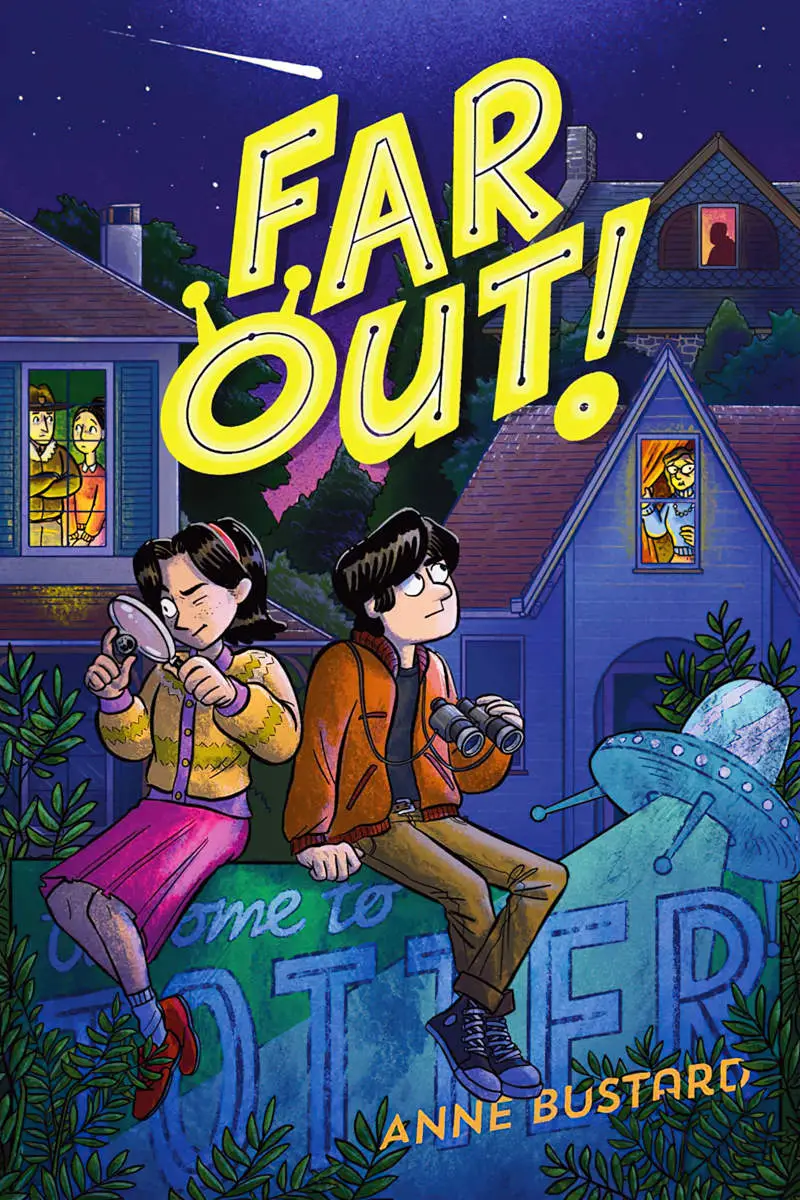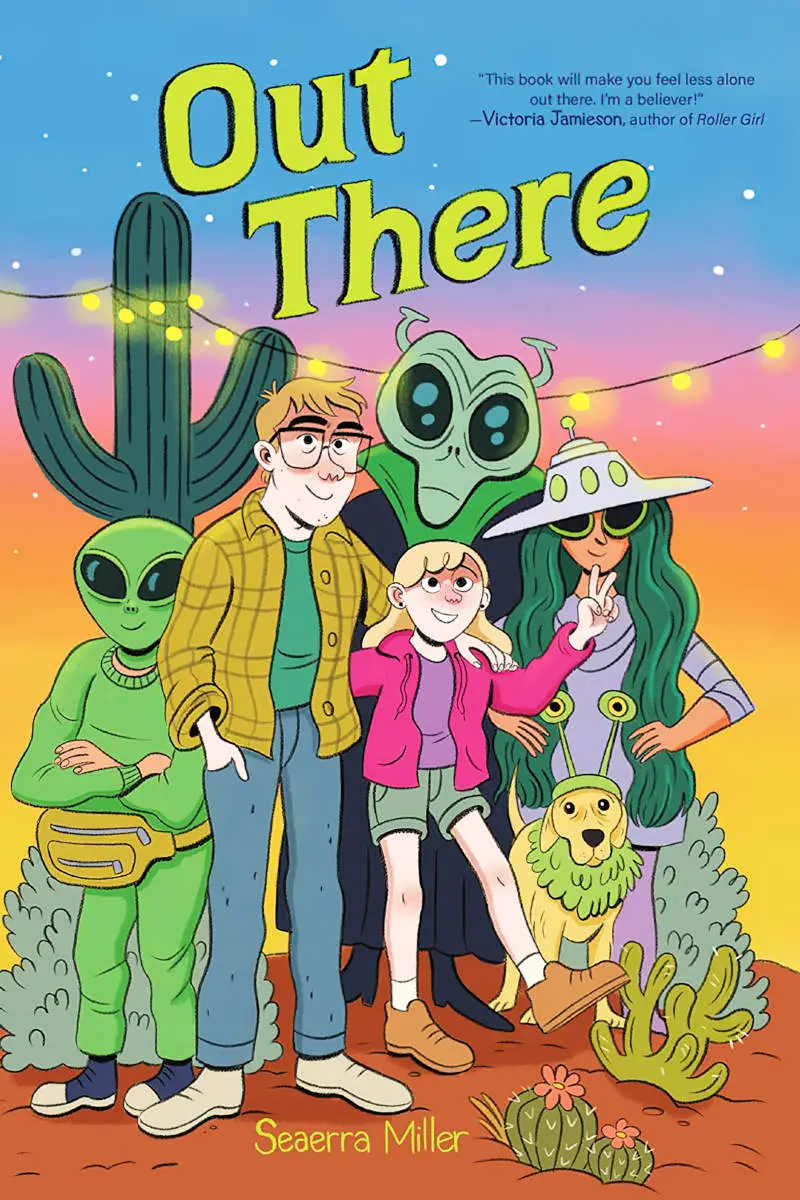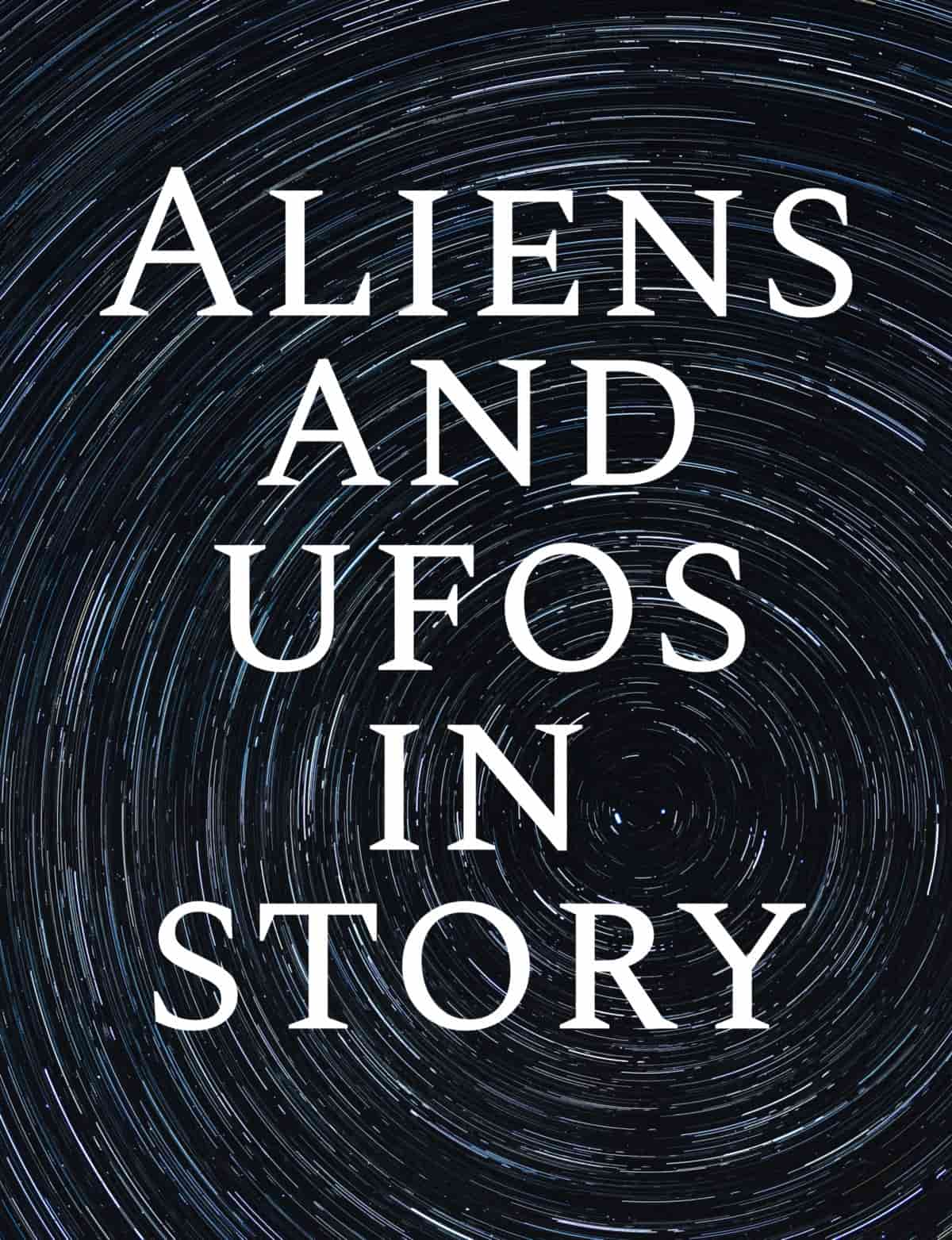A brief history of aliens, UFOs and otherworldly creatures in art, literature and storytelling more generally.
ABDUCTION
The perceived experience of being taken by a UFO. People who claim to have been kidnapped by alien beings then returned are ‘abductees’. They have been interested on popular talk shows such as Oprah, Montel Williams, Maury Povich, Donahue, Sally Jesse Raphael, Jenny Jones and Larry King Live e.g. Larry King’s two-hour special on UFO abductions and government cover ups: UFO Coverup: Live From Area 51 (1994).
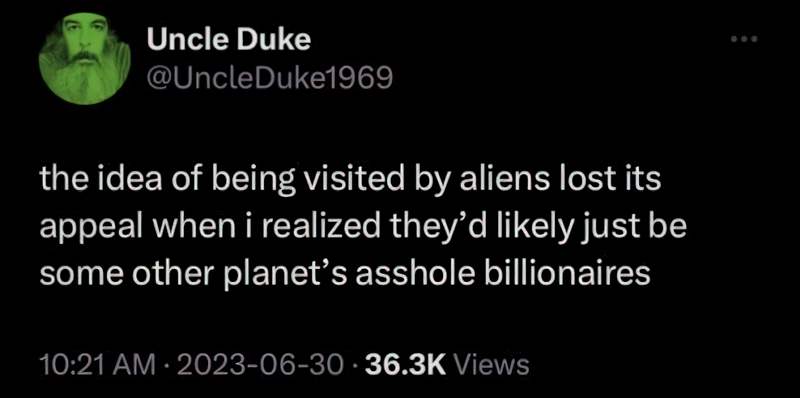
ANGELS AND DEMONS
Our brains are optimised for story, and brains provide story where no explanation exists.
The concept of ‘alien’ is a little over a century old. The concept was popularised via science fiction. Before H.G. Wells, if someone saw an unidentified object in the sky, they might have referred to it as an angel or a demon.

CLOSE ENCOUNTER (HYNEK’S SCALE)
A term used in ufology, suggested by J. Allen Hynek in a 1972 book. If you’ve heard this terminology, it might be from the 1972 film called Close Encounters of the Third Kind.
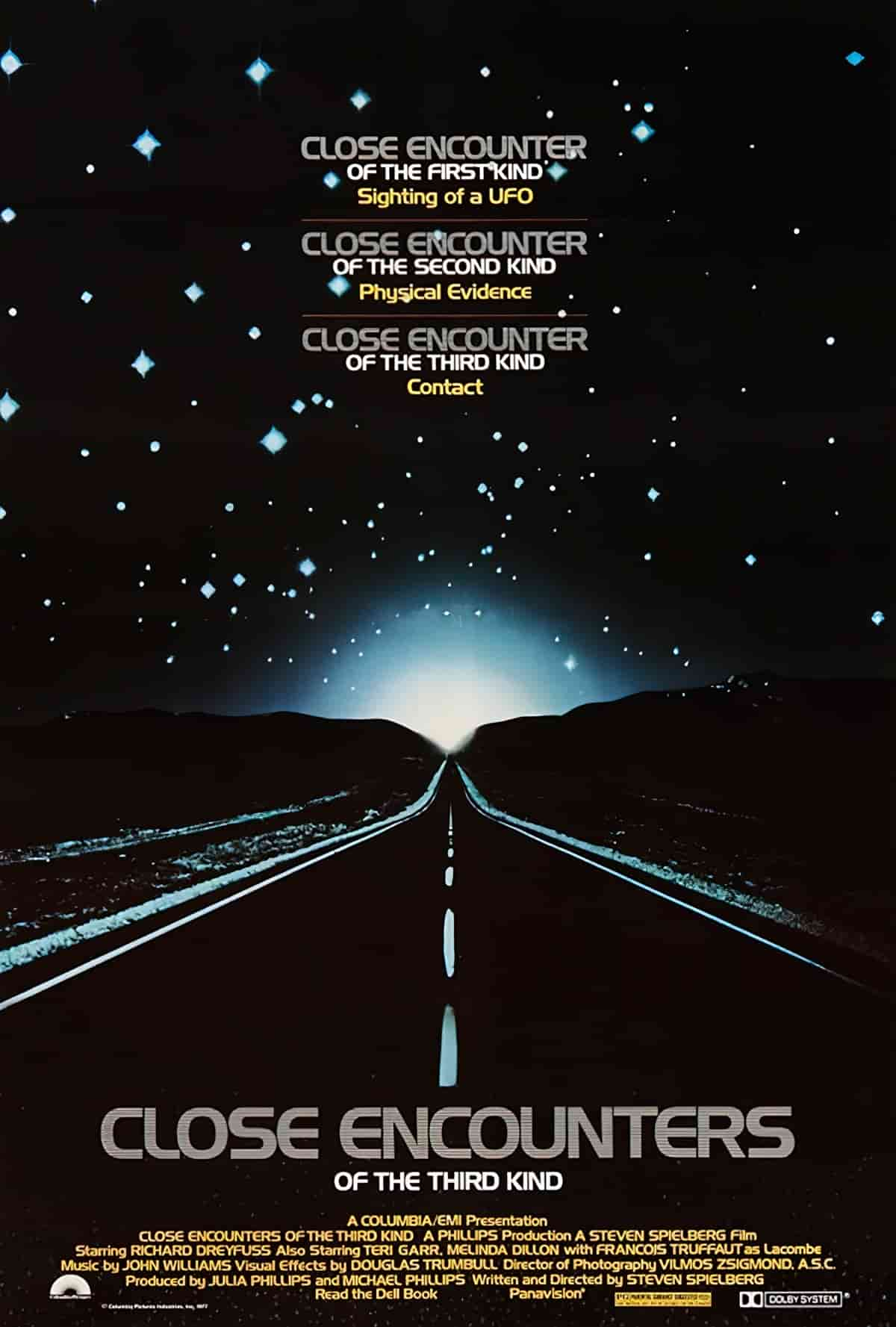
To be close, the UFO has to be within 150 metres.
Of the first kind: A sighting of a UFO (within 150 metres)
Of the second kind: A physical effect e.g. the UFO messes with the working of your car engine and you can’t drive away
Of the third kind: The UFO itself is right there (not just the disc in the sky)
Of the fourth kind: Human abduction (not Hynek’s invention)
Of the fifth kind: Direct communication between human and alien
CONTACT PARADOX, THE
In this episode of Talk Nerdy, Cara is joined by science journalist and editor Keith Cooper to talk about his new book, “The Contact Paradox: Challenging Our Assumptions in the Search for Extraterrestrial Intelligence.” They talk about the history of the search for extraterrestrial intelligence (SETI), and how attempts at understanding potential alien civilizations may help us better know ourselves.
E.T.
A super popular family movie by Steven Spielberg. Children of the 80s knew that E.T. stands for extraterrestrial.
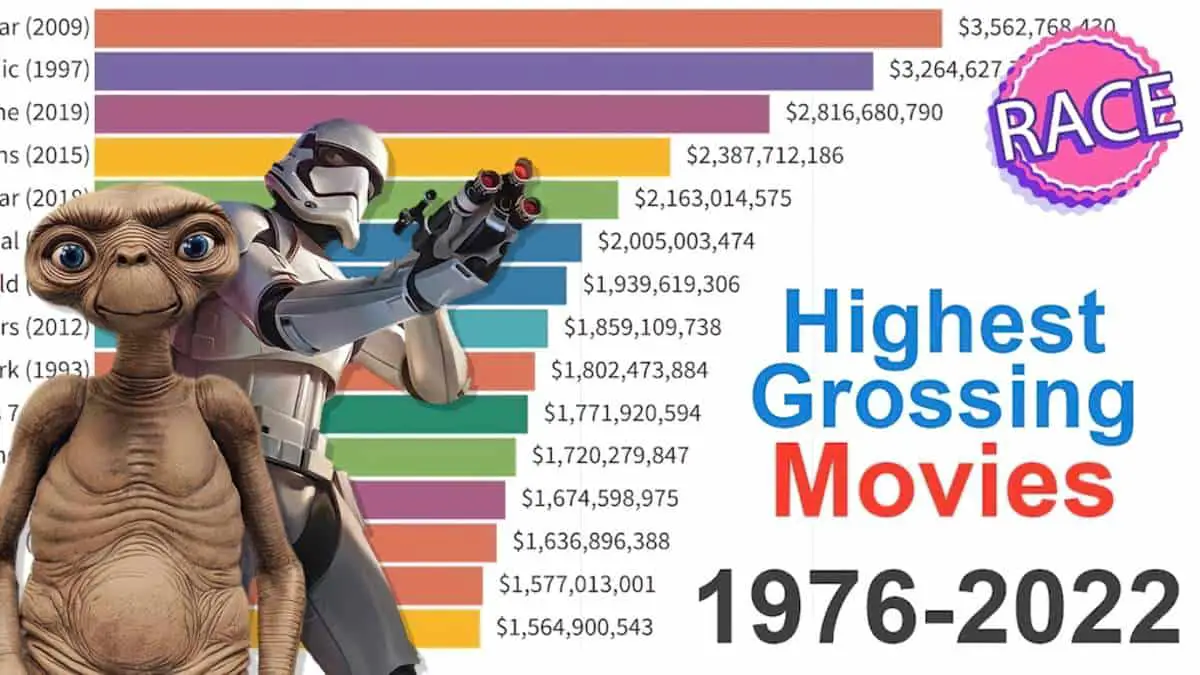
EXPERIENCER
The Resonance of Unseen Things: Poetics, Power, Captivity, and UFOs in the American Uncanny
When we talk about stories of alien abduction in the United States, we often do so through a framework of belief vs. disbelief. Do I think this story is true, or do I think it’s false? Anthropologist Susan Lepselter asks what happens when we instead listen to “UFO talk” ethnographically, understanding it as a form of vernacular American poetics that must be made sense of within specific cultural and political contexts. In The Resonance of Unseen Things: Poetics, Power, Captivity, and UFOs in the American Uncanny (University of Michigan Press, 2016), Lepselter draws on years of interviews with “experiencers,” those who tell of being abducted by aliens, and participant-observation at an experiencers support group in a southern US city. Her wide-ranging book considers abduction stories in relation to other narrative forms—captivity narratives, conspiracy theories, frontier tales—offering new and shifting frameworks for making sense of the weird, uncanny, random, and real.
New Books Network
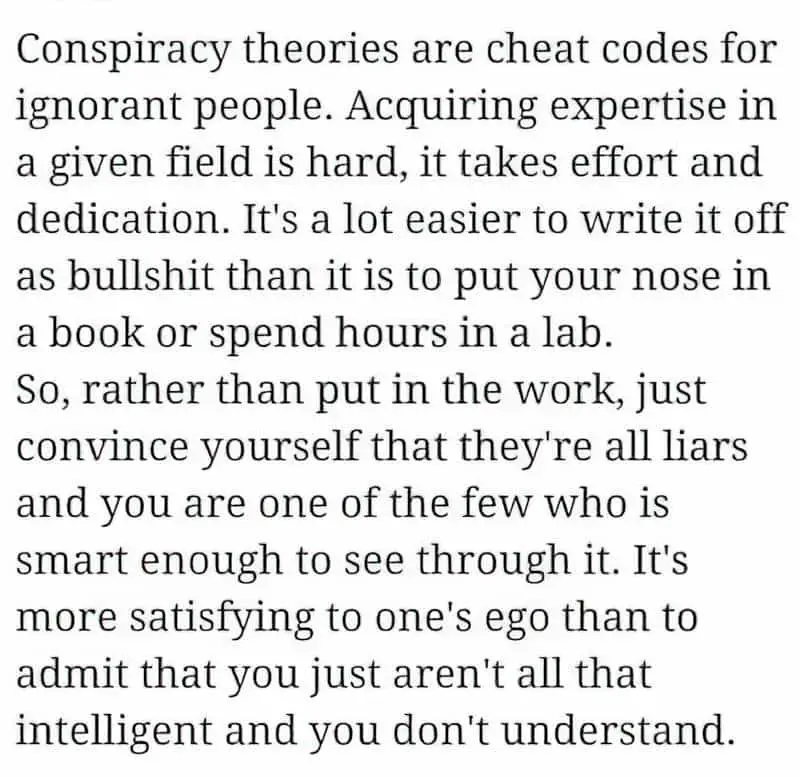
EYEWITNESS TESTIMONY
Eyewitness testimony is the most fallible kind of evidence. We cannot trust anything people can see, even when people see something en masse. This is because people can be influenced en masse by false narratives.
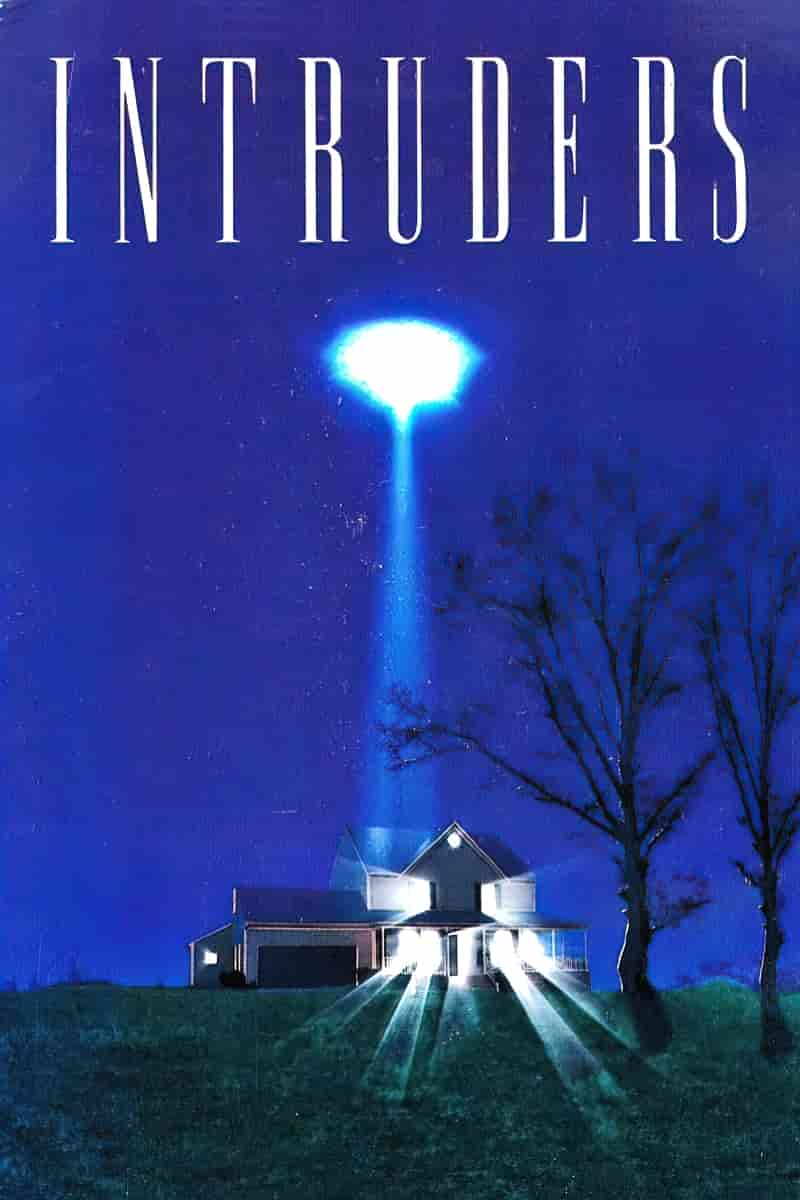
A three-hour TV movie (1992) based on a book by real-life abductee Budd Hopkins.
All over the world, people report they’ve been visited by aliens, taken aboard spaceships and medically examined. The authorities appear to know all about these visits but won’t acknowledge it publicly. This film focuses on two ‘victims’ who struggle to live normal lives, but the aliens keep coming back.
Marking copy
FIRE IN THE SKY
Fire In The Sky is a 1993 movie about the supposed UFO abduction of Arizona logger Travis Walton. It was a modest hit.
FISH STORY
A story which accumulates details as each person tells it. This applies very well to stories of alien sightings.
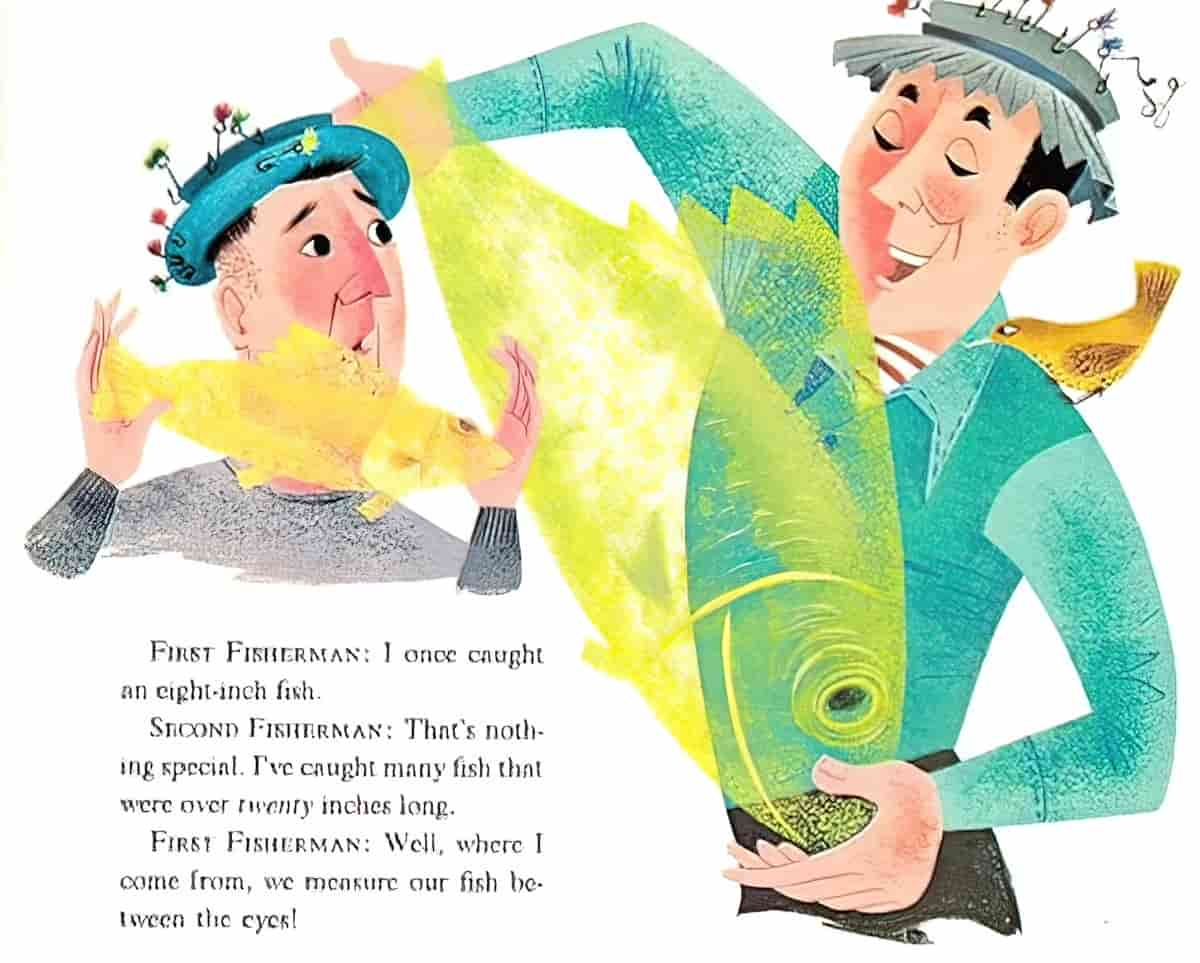
FLYING SAUCER
A flying saucer is, of course, a UFO shaped like a saucer. Currently the archetypal flying craft. There is no scientifically based reason for UFOs to be shaped like a saucer. If a saucer were aerodynamic, our own rocket shapes would surely be shaped like saucers, yet they’re not. These craft don’t even replicate technology that exists here on Earth.
Their lack of scientific reason may be part of it. After all, if an alien life form can get a flying saucer to travel vast distances, they must have knowledge of physics far beyond our own understanding.
More to the point, the shape of the fictional flying saucer probably relies on shared symbolism around circles, and especially the mandala, an ancient meditative symbol that reveals the underlying connectedness of nature. In Sanskrit this is known as as ‘sacred circle’.
The connection betwen flying saucers and the mandala can be seen in the work of Romanian artist Ionel Talpazan (1955–2015).
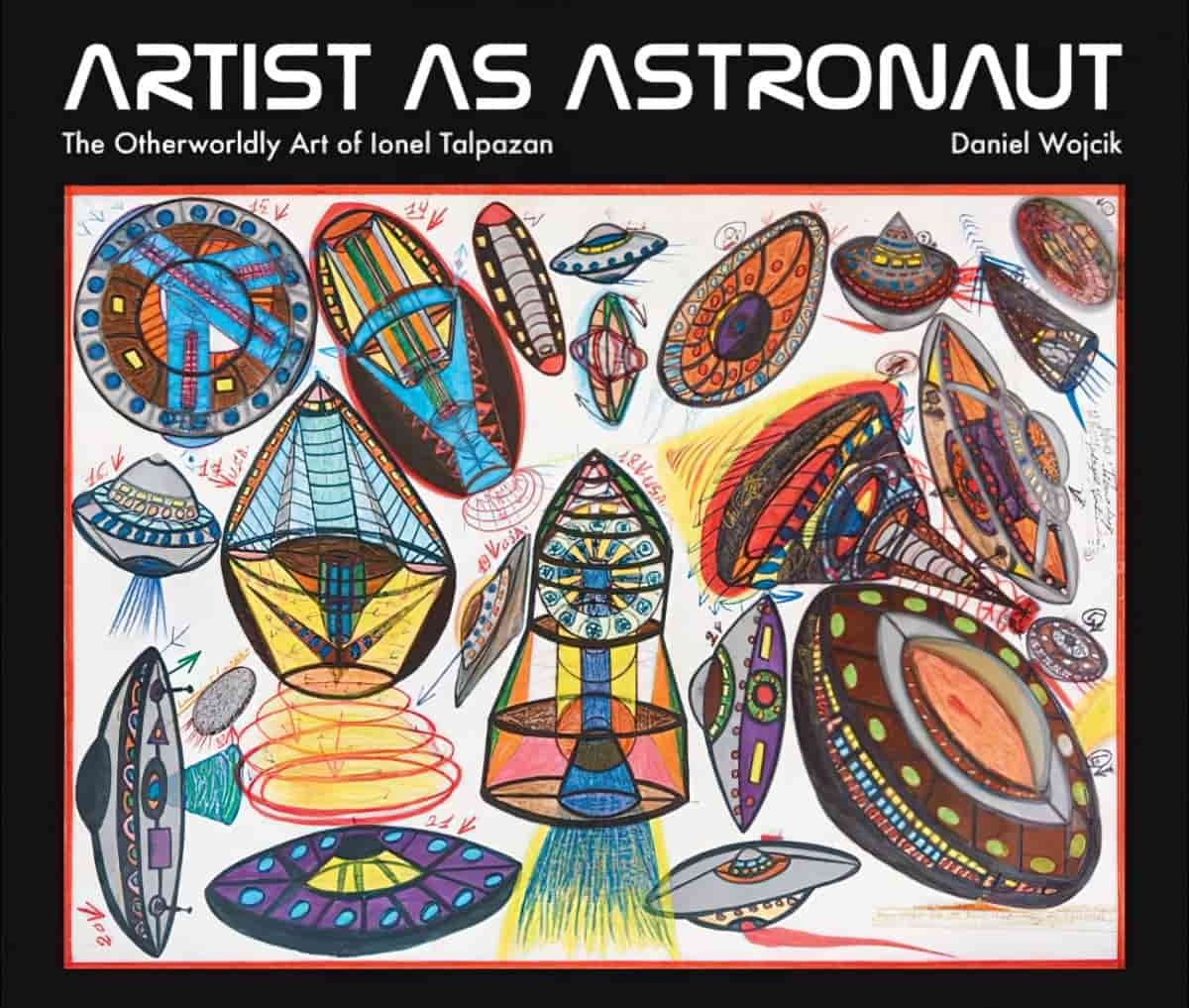
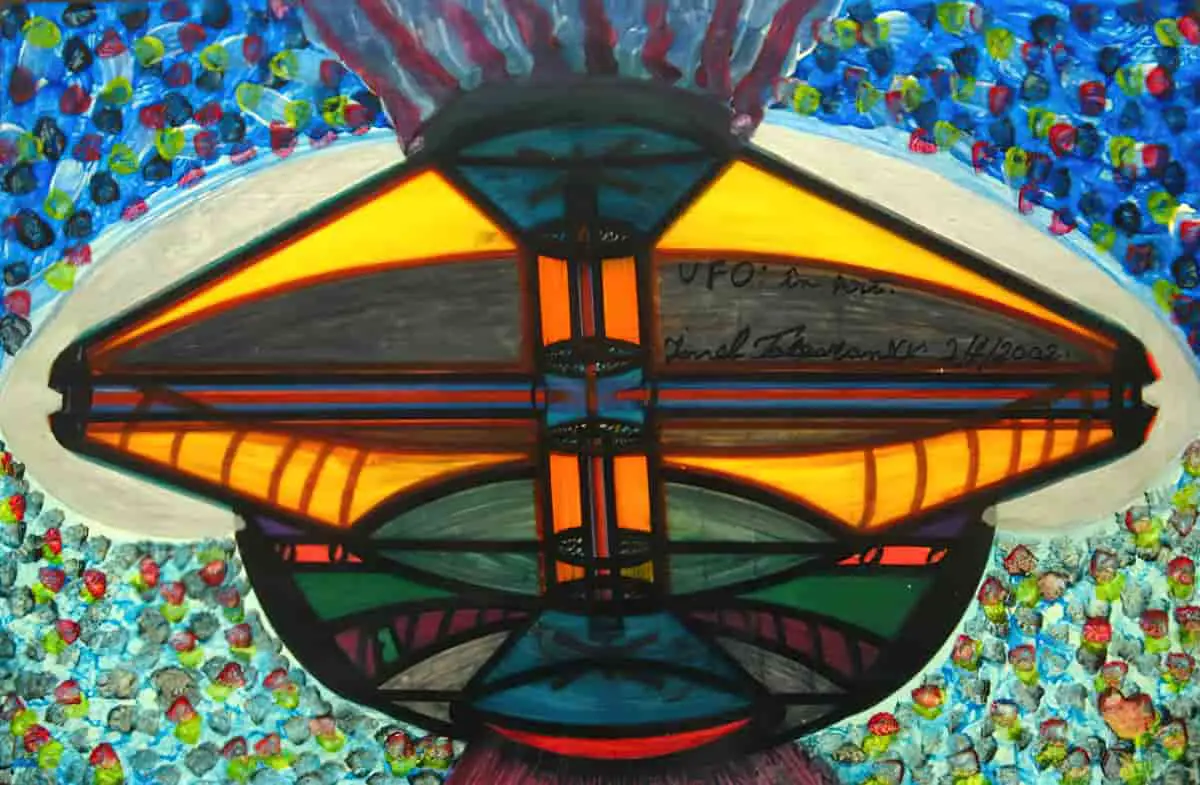
And here we have an archetypal, non-aerodynamic flying saucer UFO from a 1950s children’s picture book. More modern concepts omit the flashing aerial, and aerials in general, probably because aerials have become hidden in modern products. (For example, the wires heating the back windscreen of a car double as radio aerials. They no longer stick straight up out of your car as they used to in the 1980s and 90s.)
GREY (ALIEN)
Probably from an episode of Outer Limits (TV show 1963–1965) called “The Bellero Shield”.
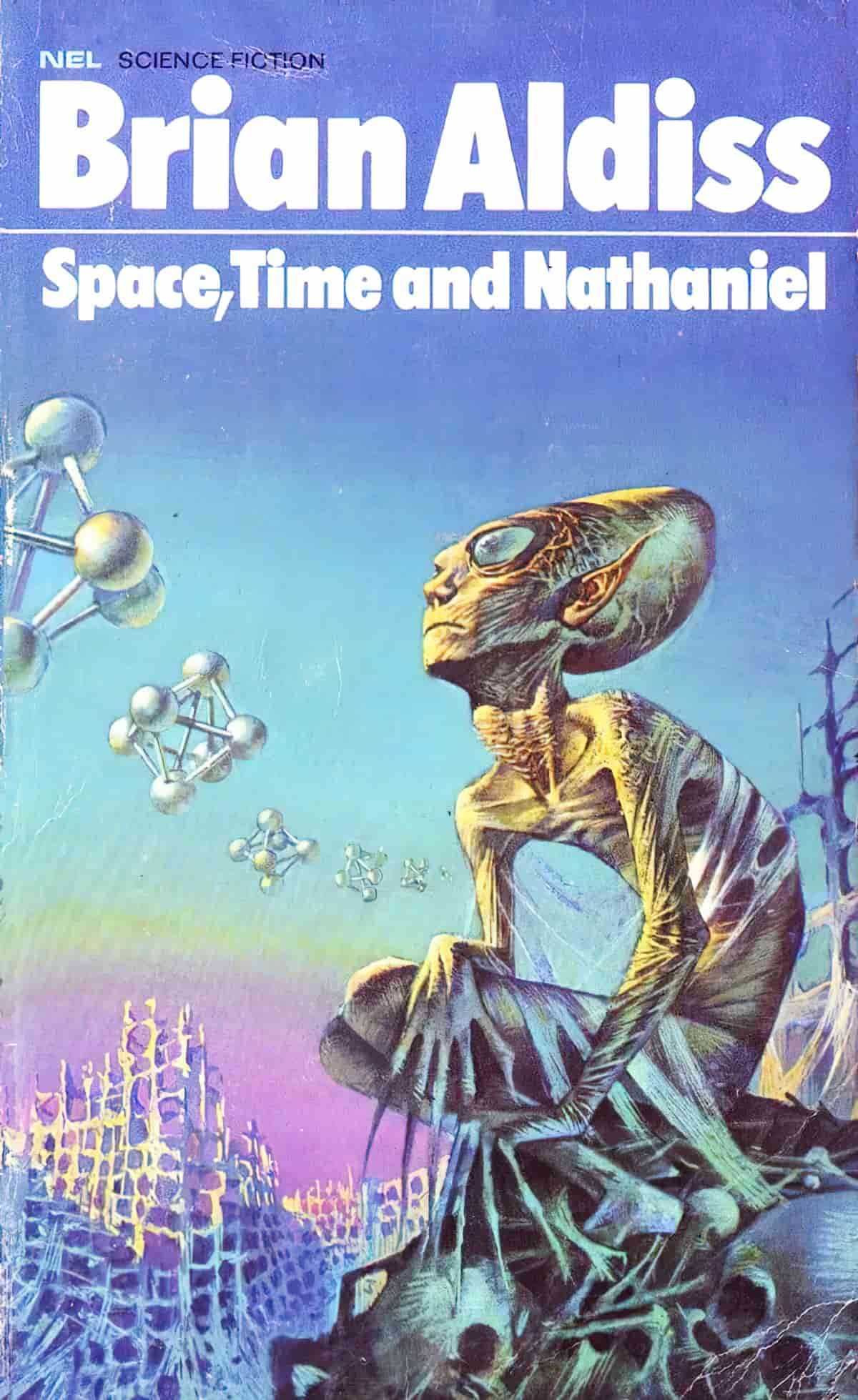
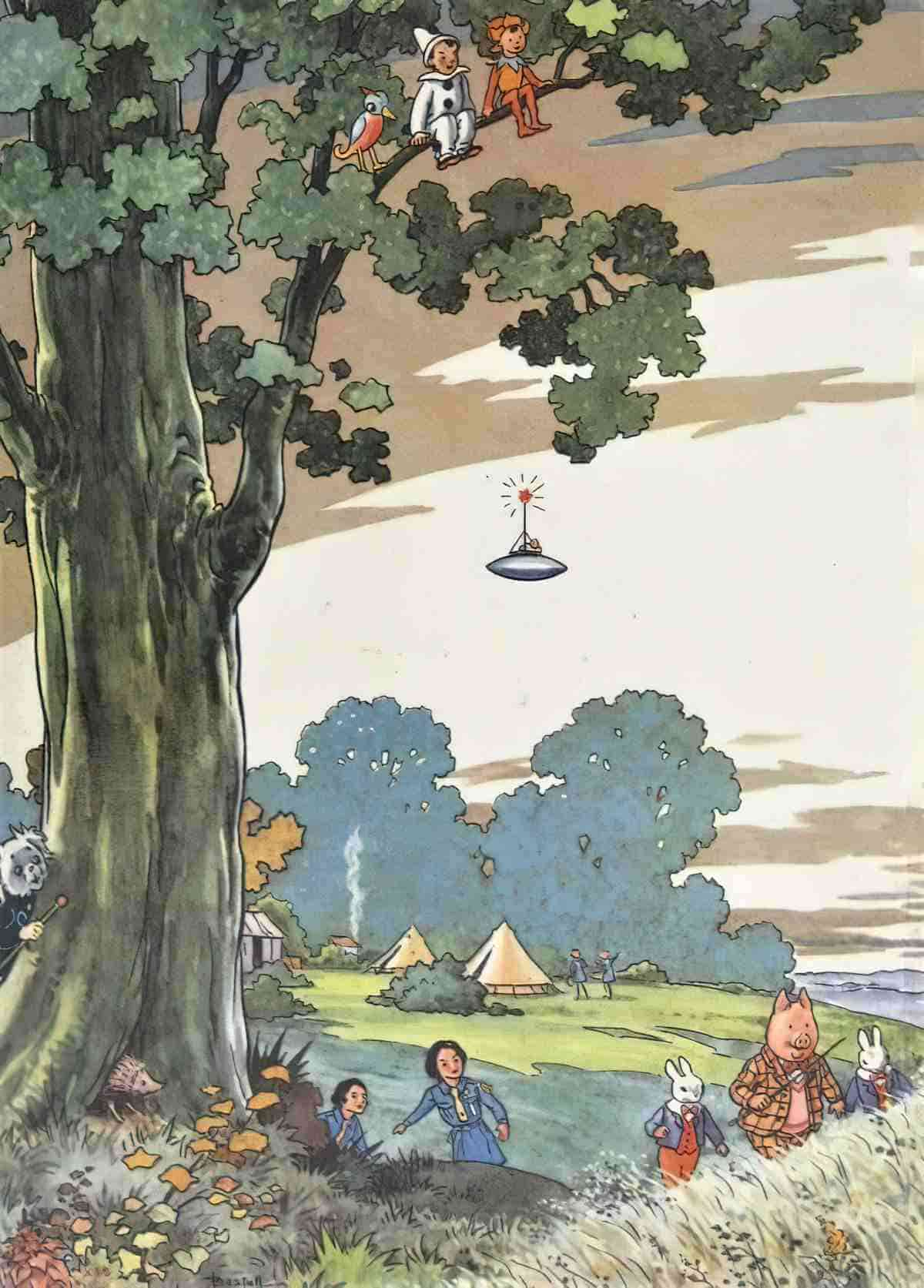
INSECTS
The more you learn about insects, the more nightmare material you will encounter.
Insect life therefore makes great fodder for alien stories. Right here on Earth, insects are the ultimate alien species (alongside octopuses, perhaps).
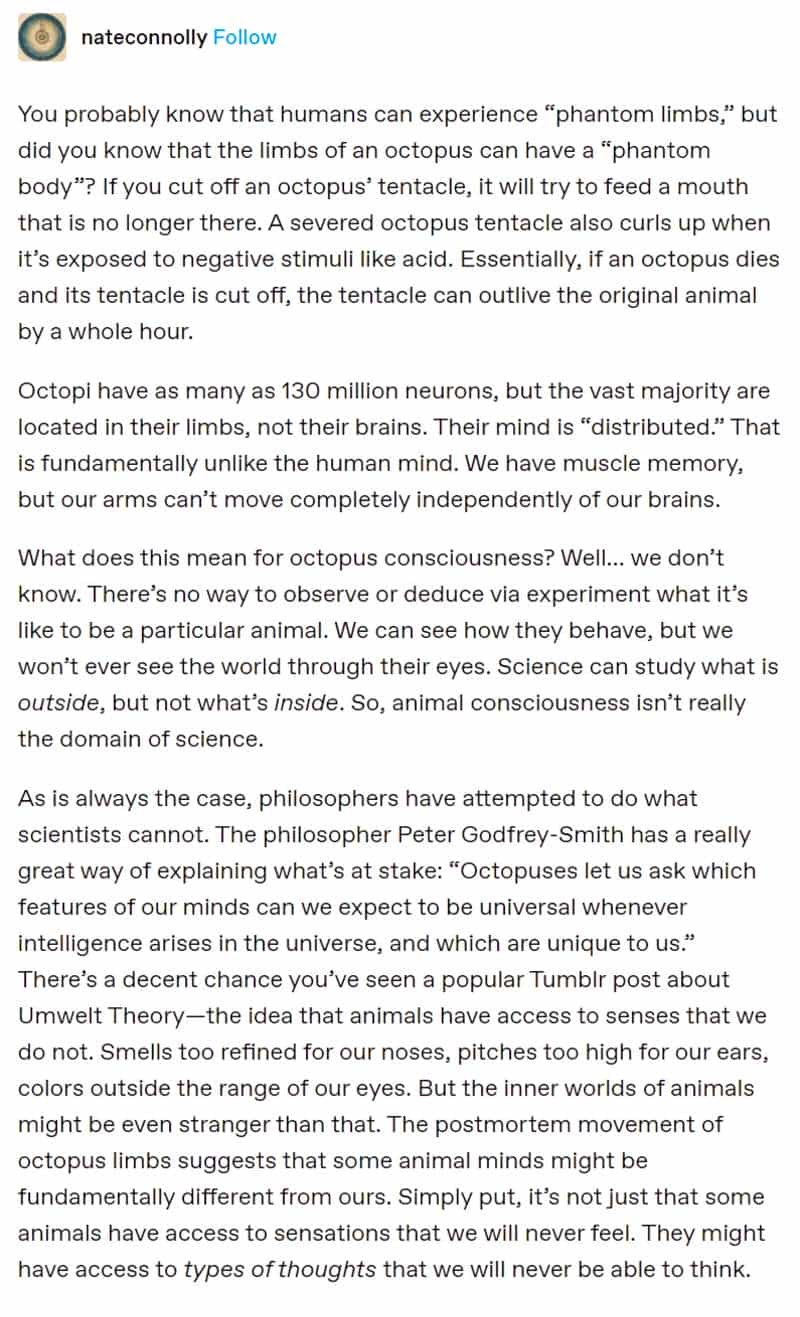
Ridley Scott’s Alien (1979) is a good example of a film which makes heavy use of entomology to create its otherworldly lifeform, which gestates in another body. Some Earthly insects do exactly that.
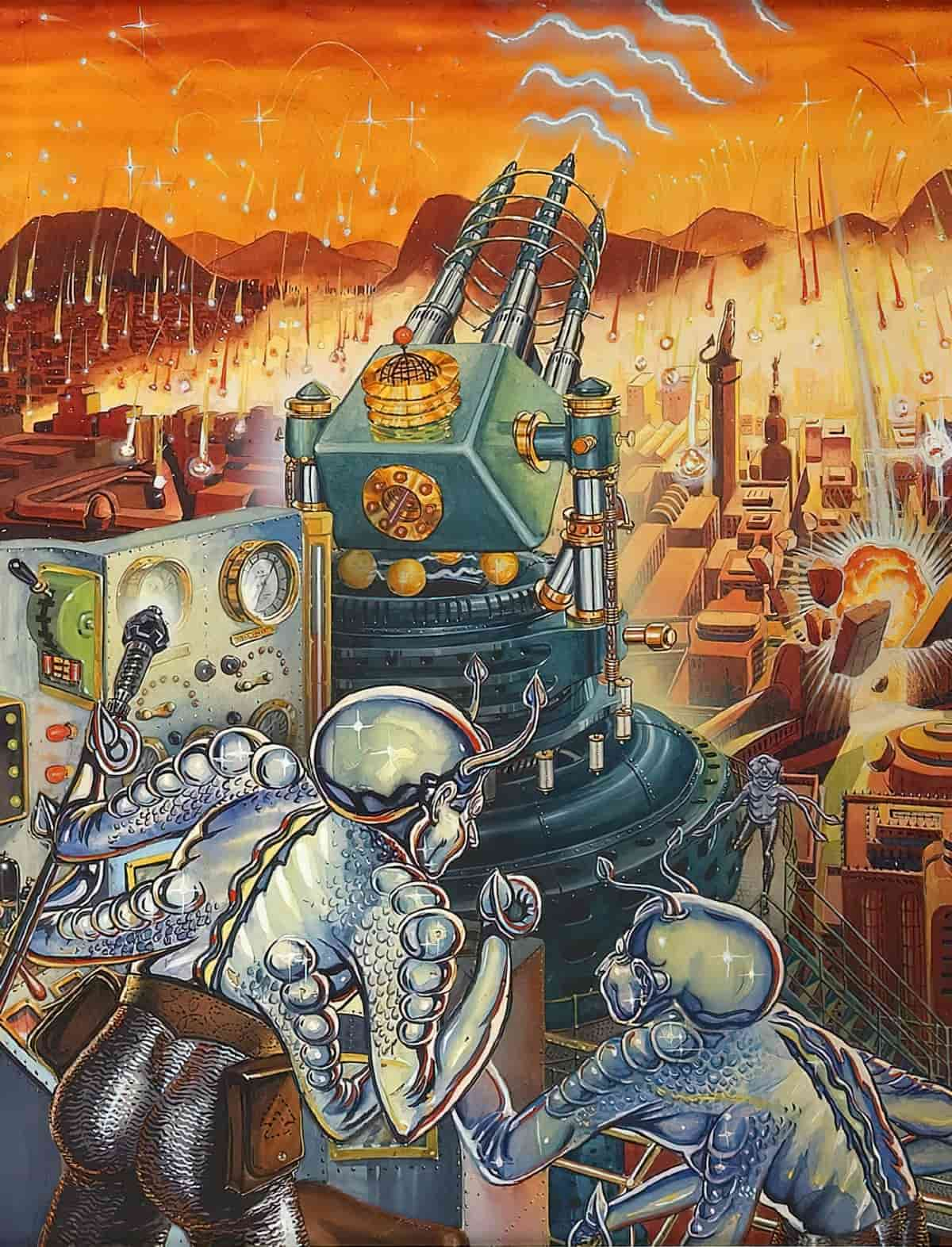
JUNG, CARL (1875-1961)
We don’t typically associate Swiss psychiatrist Carl Jung with aliens these days, but in he was also, as a skeptic, interested in people’s relationship to UFOs. In the 1950s he was at the height of his career, and wondered what drove the 1950s interest in aliens. He confined his subjects to professional people such as pilots and military personnel who shared that they had seen inexplicable phenomena. He found that people who think they see aliens are not psychotic or otherwise diagnosable.
One can hardly suppose that anything of such worldwide incidence as the UFO legend is purely fortuitous and of no importance whatever. The many thousands of individual testimonies must have an equally extensive causal basis.
Carl Jung
This is explained in the book Flying Saucers: A Modern Myth of Things Seen In The Skies, translated into English in the 1970s. He spends a lot of time on interpretations of dreams and paintings featuring UFOs, connecting 20th century alien stories to much older mythology.
The book came about after Jung wrote a much shorter article, first published in 1954. Unfortunately, fake news is not a modern thing. Media twisted Jung’s message and it was widely reported that the skeptical man of science, Carl Jung, believed in UFOs now.
MACK, JOHN E.
John E. Mack (1929–2004) was a Harvard Professor of Psychiatry, eminent practitioner, researcher, and Pulitzer Prize-winning writer who risked his entire reputation by publishing a book on alien abductions called Abduction: Human Encounters with Aliens (1994). He interviewed supposed abductees using hypnotic regression.
His peers believe the supposed abductees were interpreting experience of sleep paralysis as abductions, influenced by popular stories about alien abductions proliferating in the culture.
MEN IN BLACK
In popular culture and UFO conspiracy theories, men in black (MIB) are supposed men dressed in black suits who claim to be quasi-government agents, who harass, threaten, or sometimes even assassinate unidentified flying object (UFO) witnesses to keep them quiet about what they have seen.
Wikipedia
This trope can be seen in stories for children e.g. in The Iron Giant. Men in Black are symbolically useful because they stand in for anything which is repressed or made taboo.
MORTALITY
Belief in UFOs is connected to our wrestling with knowledge of death. For more on that read Intimate Alien by David Halperin, who says, “Aliens are a myth; myths are real.”
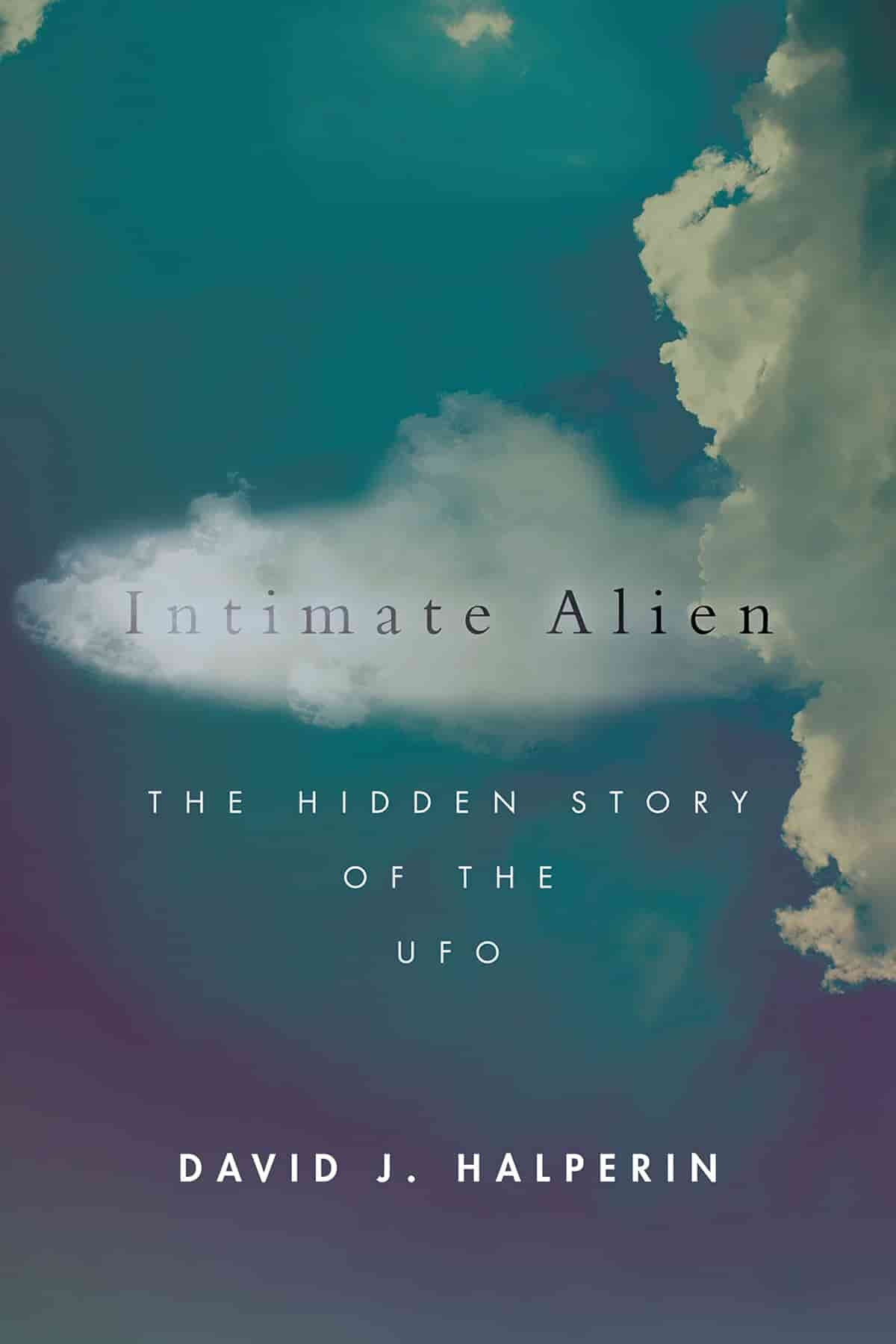
UFOs are a myth, says David J. Halperin—but myths are real. The power and fascination of the UFO has nothing to do with space travel or life on other planets. It’s about us, our longings and terrors, and especially the greatest terror of all: the end of our existence. This is a book about UFOs that goes beyond believing in them or debunking them and to a fresh understanding of what they tell us about ourselves as individuals, as a culture, and as a species.
In the 1960s, Halperin was a teenage UFOlogist, convinced that flying saucers were real and that it was his life’s mission to solve their mystery. He would become a professor of religious studies, with traditions of heavenly journeys his specialty. With Intimate Alien, he looks back to explore what UFOs once meant to him as a boy growing up in a home haunted by death and what they still mean for millions, believers and deniers alike.
From the prehistoric Balkans to the deserts of New Mexico, from the biblical visions of Ezekiel to modern abduction encounters, Intimate Alien traces the hidden story of the UFO. It’s a human story from beginning to end, no less mysterious and fantastic for its earthliness. A collective cultural dream, UFOs transport us to the outer limits of that most alien yet intimate frontier, our own inner space.
Interview with the author at the New Books Network
NUCLEAR AGE
Alien stories are a product of the collective anxieties of our time. Therefore it makes complete sense that the 20th century gave rise to the exact alien stories we got.
Take Roswell. The bomb group who destroyed Hiroshima and Nagasaki was headquartered at Roswell. Those are the same people who claimed to have found the landed saucer. The Roswell mythology spread from this site the very same month this magazine cover was published:
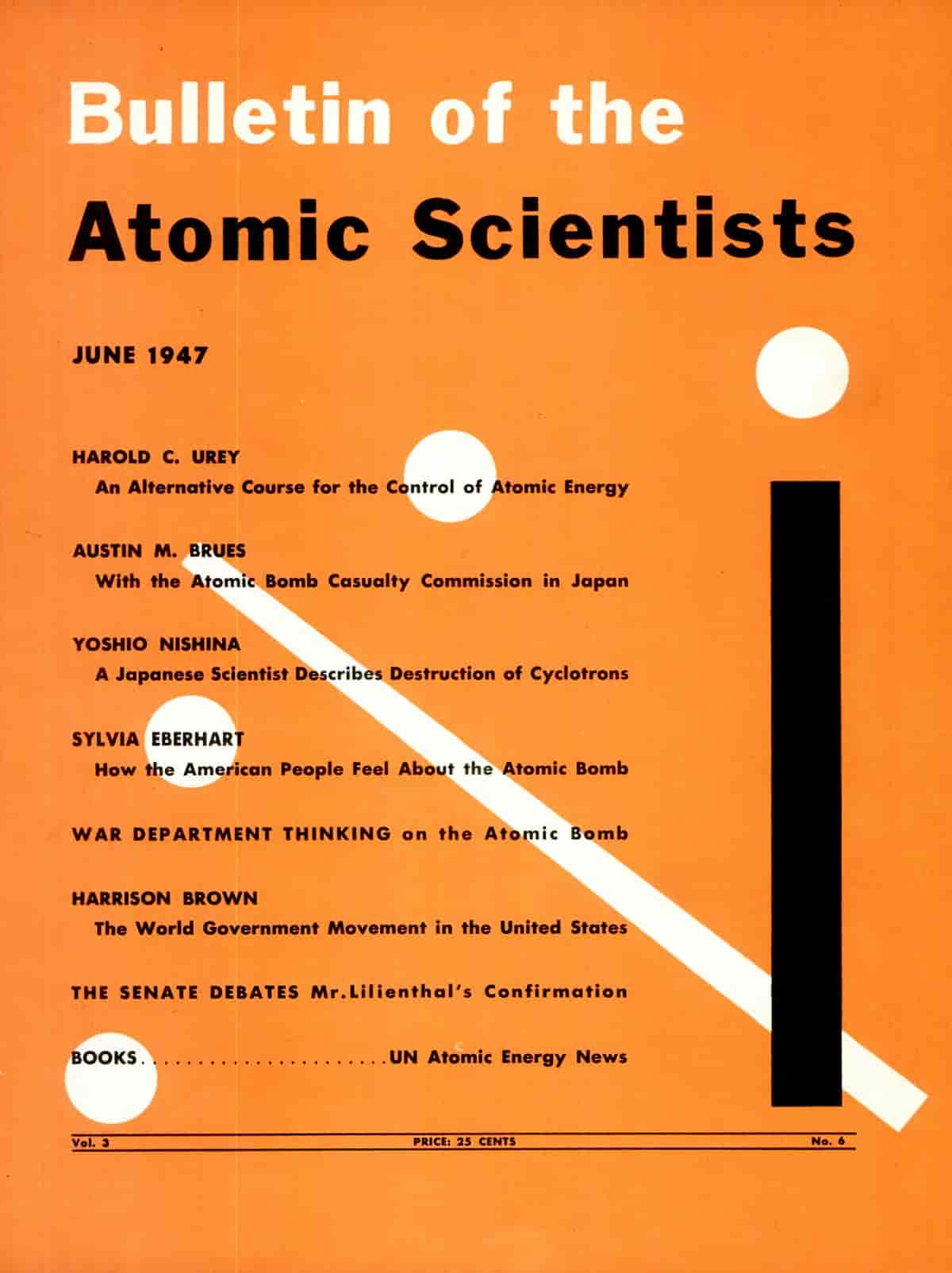
The Doomsday Clock is many things all at once: It’s a metaphor, it’s a logo, it’s a brand, and it’s one of the most recognizable symbols in the past 100 years. It has permeated not only the media landscape but also culture itself. The Doomsday Clock appears in novels by Stephen King and Piers Anthony, songs by The Who and the Clash, and comics like Watchmen and Stormwatch.
The Bulletin of the Atomic Scientists
The symbolism around both the Doomsday Clock AND alien stories about UFOs come out of the sky, both deal with anxieties around a collective threat to our entire human species.
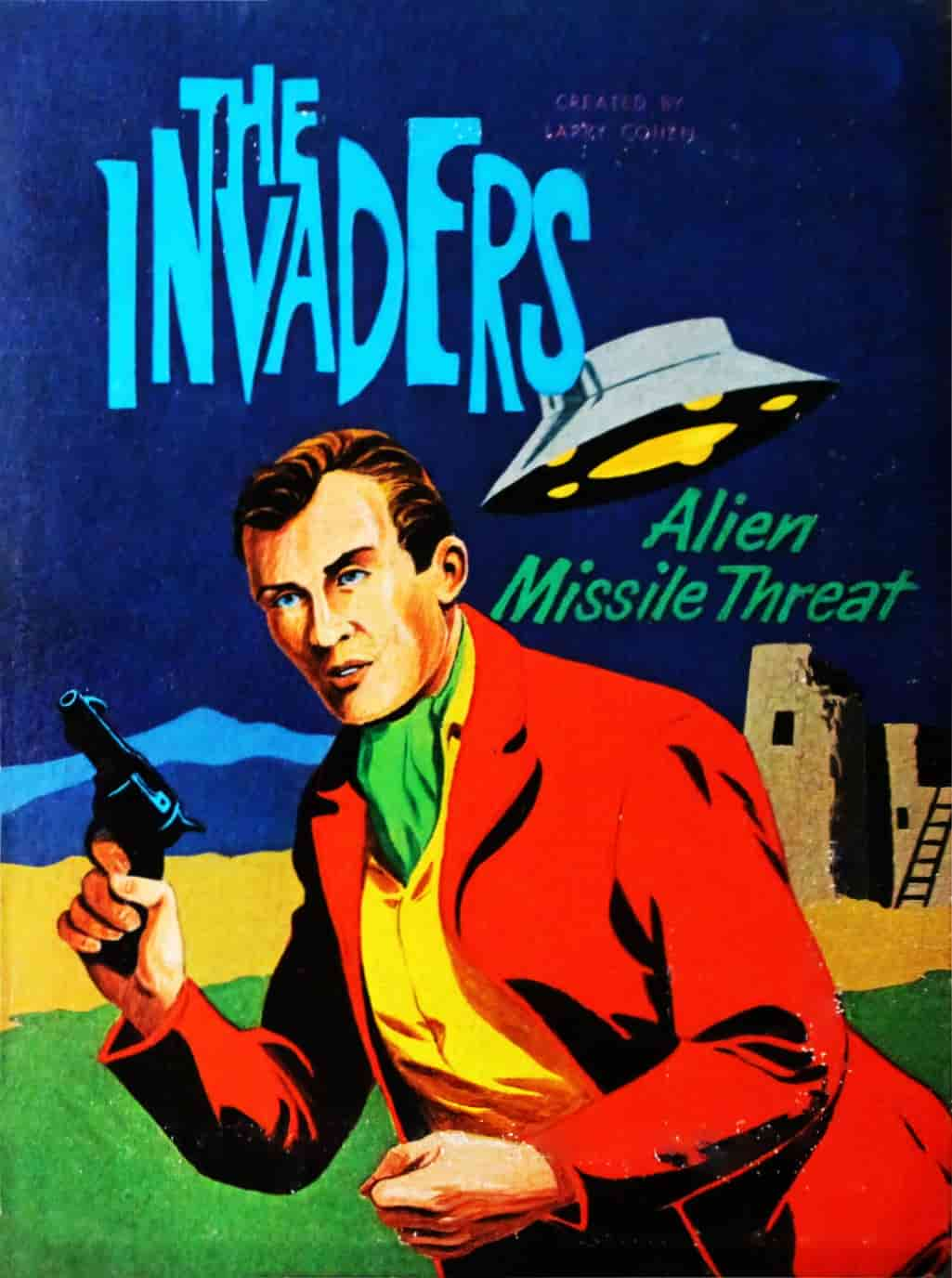
OCTOPUSES
Every generation has its own alien. In the era of H.G. Wells, aliens resembled octopuses thanks to War of the Worlds.
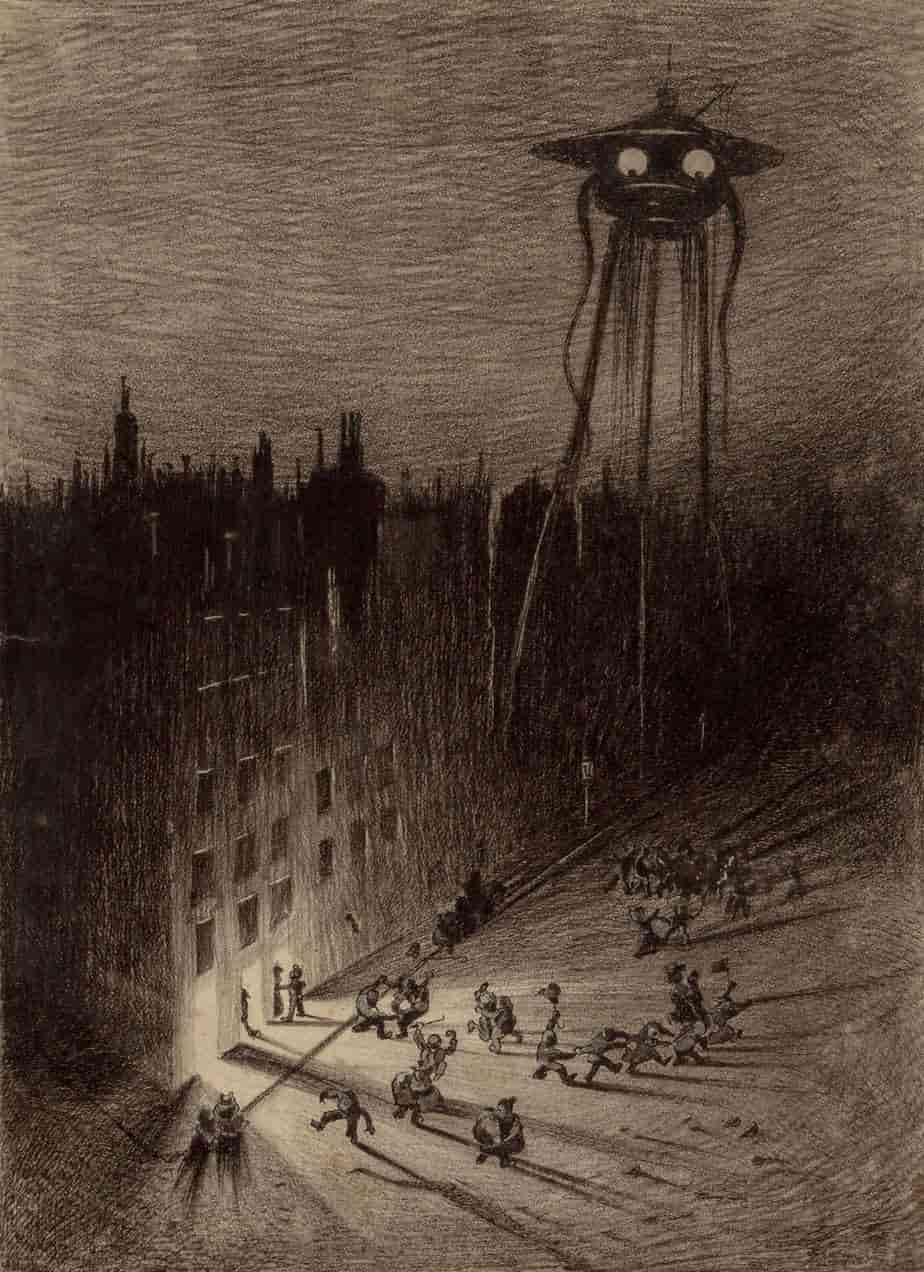
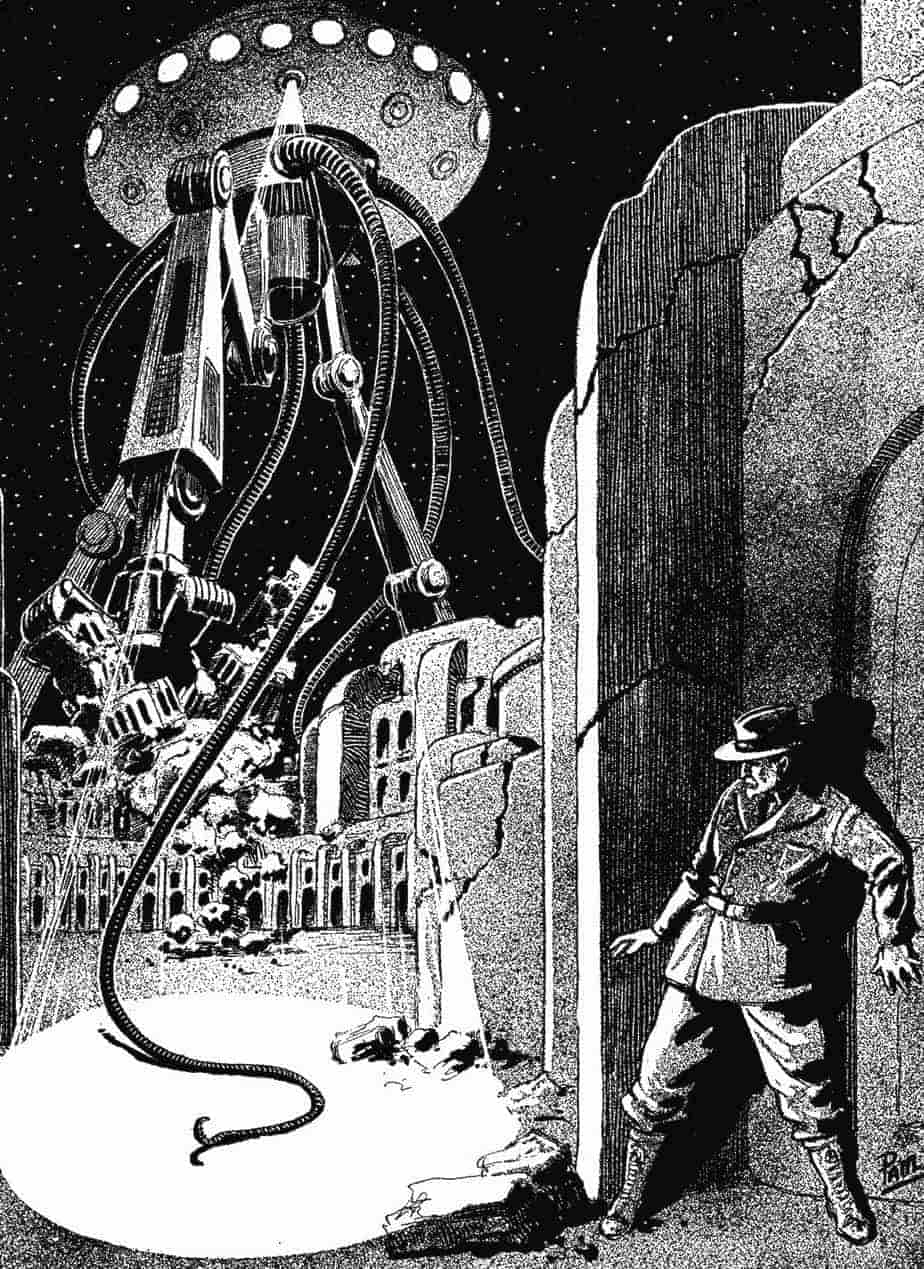
PATTERN RECOGNITION
Human brains are optimised for pattern recognition. Pareidolia is a good example — seeing faces where faces are not there. Many so-called alien sightings no doubt come from what the brain ‘sees’, no matter what’s really there.


ROSWELL EFFECT
The Roswell UFO crash was debunked soon after the story emerged, in 1947. It was such an easily debunked story that no one thought much of it at the time. The story failed to take off. However, the fringe media got hold of it. They didn’t let the story die. Nearly hirty years after the supposed event, the story really did take off. Now, since the 1970s, a number of people truly believe UFOs crashed in Roswell and that the incident was covered up.
Stories which work in this way, becoming memes, are said to have emerged due to ‘The Roswell Effect’. We are more likely to believe something, however outlandish, if we hear it over and over.
Agenda-Setting Theory: What’s important doesn’t become the news, the news becomes what’s important. The public conversation is based on whatever’s reported by the press, giving the impression that this news matters most, when really it’s just what was chosen by a few editors.
@G_S_Bhogal
UFO
Unidentified Flying Object. ‘Unidentified’ does not mean ‘unidentifiable’. Every flying object is technically unidentified until the observer knows what it is.
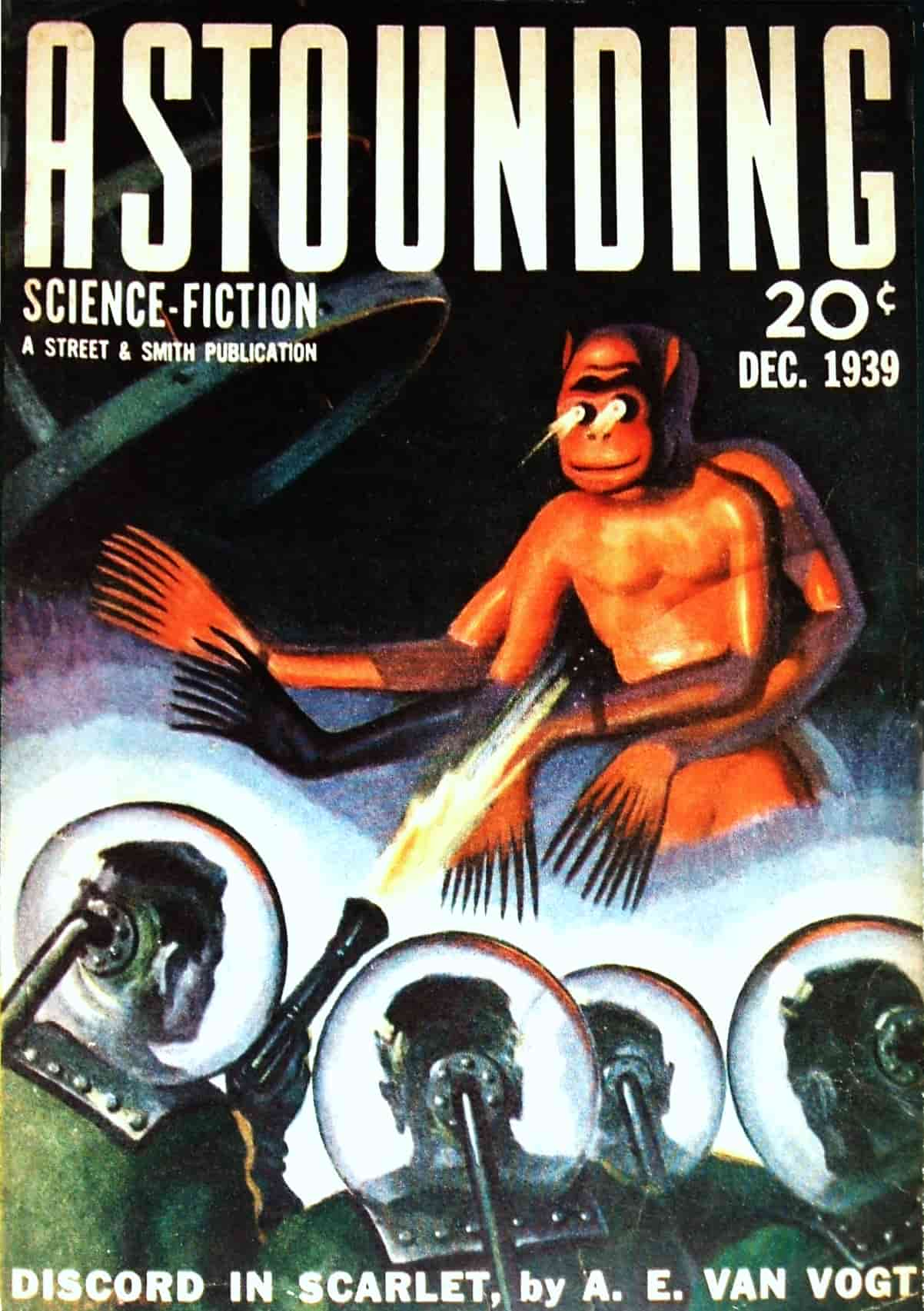
UFO MOVEMENT, THE
The American period from the late 1940s (specifically 1947) when UFO stories hit the popular imagination with a vengeance. The first claims of extended human contact with aliens came in the 1950s.
ULTRATERRESTRIAL/INTERDIMENSIONAL HYPOTHESIS
Aliens are here on Earth living alongside us, but in a different dimension. We see it in the work of Charles Fort, ‘the first ufologist‘, but it was author John Keel who made the hypothesis take off in the 1970s, alongside Jacques Valles.
In this view of aliens, the other beings can be seen occasionally, but mostly can’t. This lines up with how earlier cultures thought of fairies.
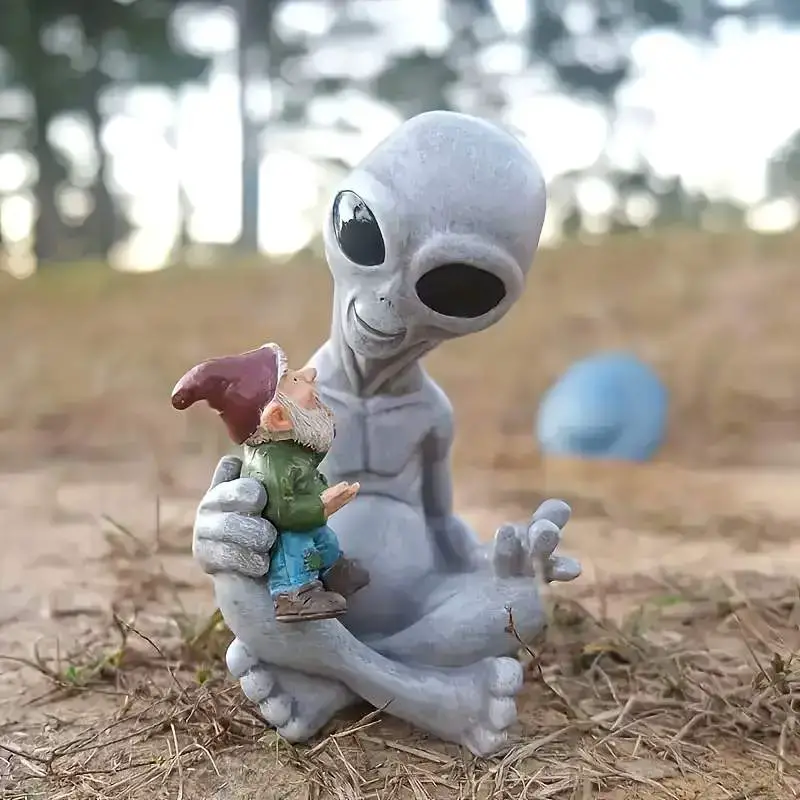
X-FILES, THE
The X-Files was (is) a hugely popular American science fiction drama television series which aired between 1993 and 2002. The series centres on FBI special agents Fox Mulder and Dana Scully who work on cases linked to the paranormal, called X-Files. The show utilized current UFO beliefs in its storylines.

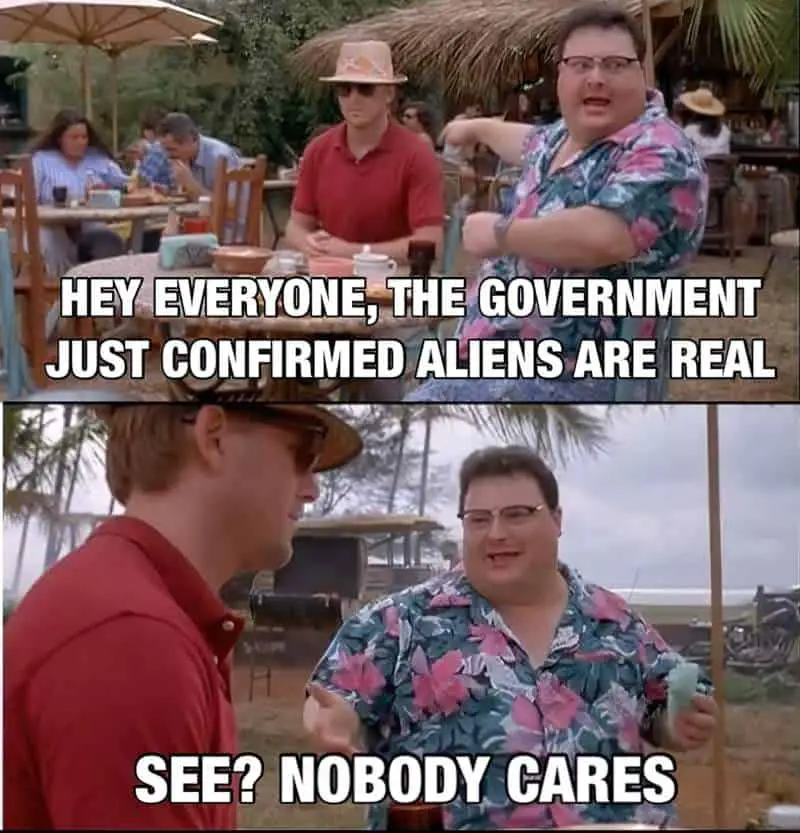
EXAMPLES OF ALIENS IN CHILDREN’S LITERATURE
WE’RE NOT FROM HERE GEOFF RODKEY
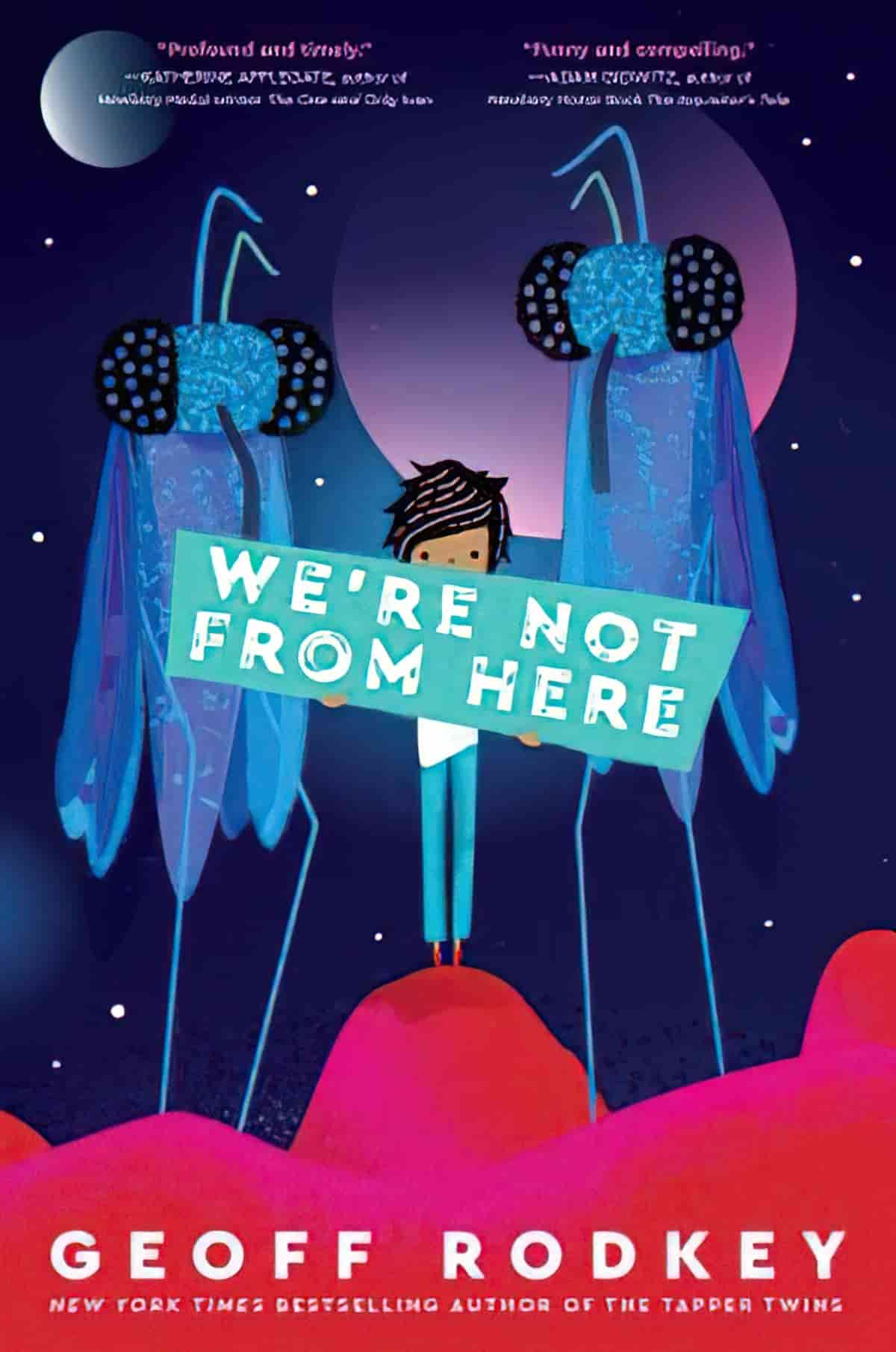
Imagine being forced to move to a new planet where YOU are the alien! From the creator of the Tapper Twins, New York Times bestselling author Geoff Rodkey delivers a topical, sci-fi middle-grade novel that proves friendship and laughter can transcend even a galaxy of differences.
The first time I heard about Planet Choom, we’d been on Mars for almost a year. But life on the Mars station was grim, and since Earth was no longer an option (we may have blown it up), it was time to find a new home.
That’s how we ended up on Choom with the Zhuri. They’re very smart. They also look like giant mosquitos. But that’s not why it’s so hard to live here. There’s a lot that the Zhuri don’t like: singing (just ask my sister, Ila), comedy (one joke got me sent to the principal’s office), or any kind of emotion. The biggest problem, though? The Zhuri don’t like us. And if humankind is going to survive, it’s up to my family to change their minds. No pressure.
MR WUFFLIES BY DAVID WIESNER
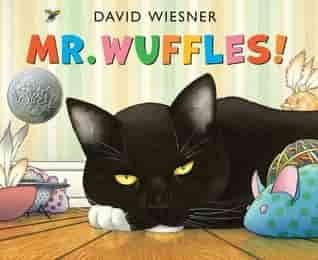
In a near wordless masterpiece that could only have been devised by David Wiesner, a cat named Mr. Wuffles doesn’t care about toy mice or toy goldfish. He’s much more interested in playing with a little spaceship full of actual aliens—but the ship wasn’t designed for this kind of rough treatment. Between motion sickness and damaged equipment, the aliens are in deep trouble.When the space visitors dodge the cat and take shelter behind the radiator to repair the damage, they make a host of insect friends. The result? A humorous exploration of cooperation between aliens and insects, and of the universal nature of communication involving symbols, “cave” paintings, and gestures of friendship.
OF JENNY AND THE ALIENS BY RYAN GEBHART
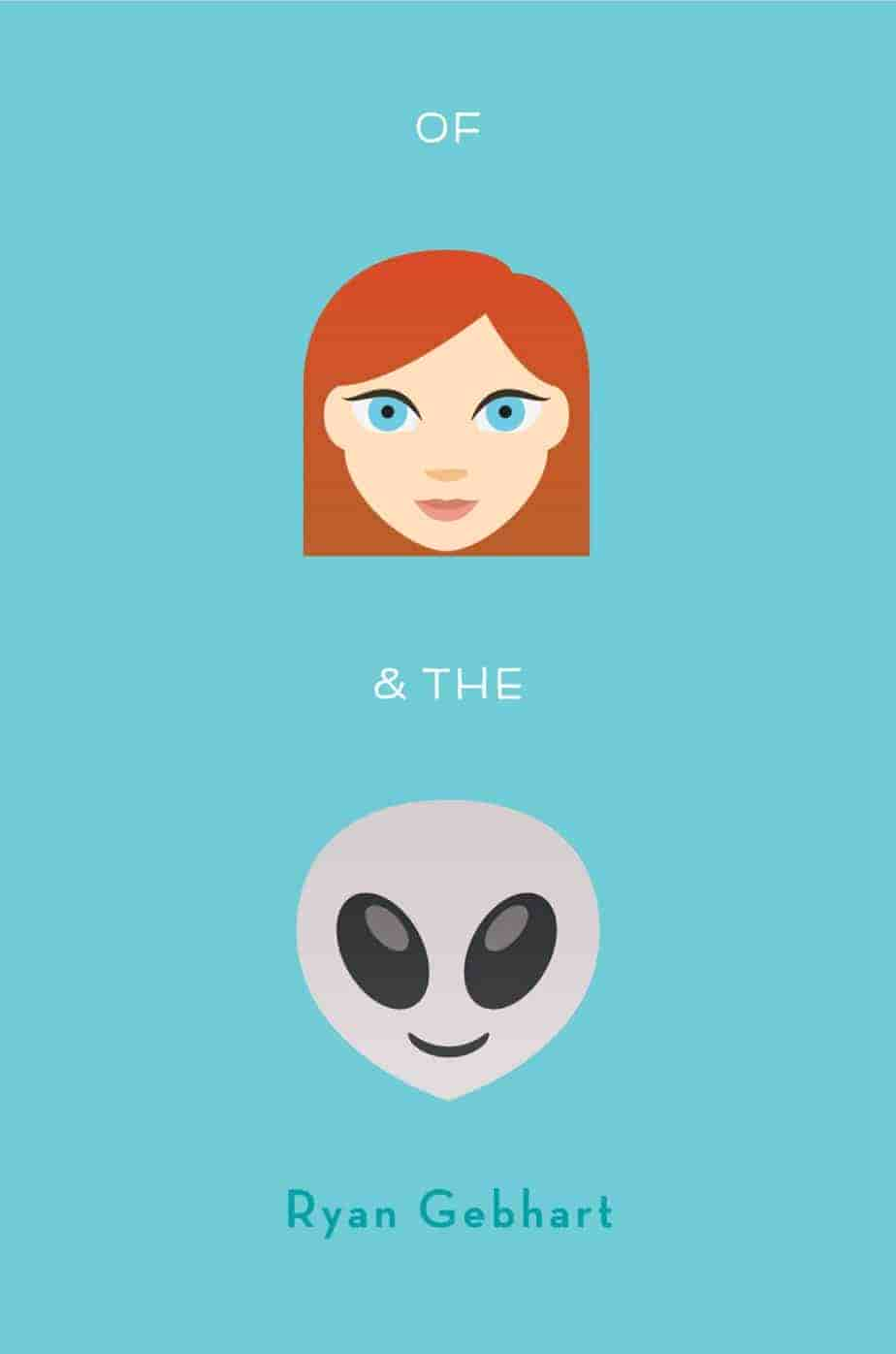
Ten years after Earth sent messages out into deep space, there has been an answer. Music from a distant planet has reached the our radios. Are aliens about to invade? No one knows, and almost-eighteen-year-old Derek doesn’t really care, because at a wild end-of-the-world party, Jennifer Novak invites him to play beer pong. And things…progress from there. Derek is in love. Deeply, hopelessly in love. He wants it all—marriage, kids, growing old on a beach in Costa Rica. Jenny is The One.
But Jenny has other plans, and they may or may not include Derek. So Derek will try anything to win her—even soliciting advice from the alien who shows up in his hometown. This alien may just be the answer to Derek’s problem. But is Derek prepared to risk starting an interstellar war to get his girl? And just how far is he willing to travel to discover the mysteries of the universe—and love?
